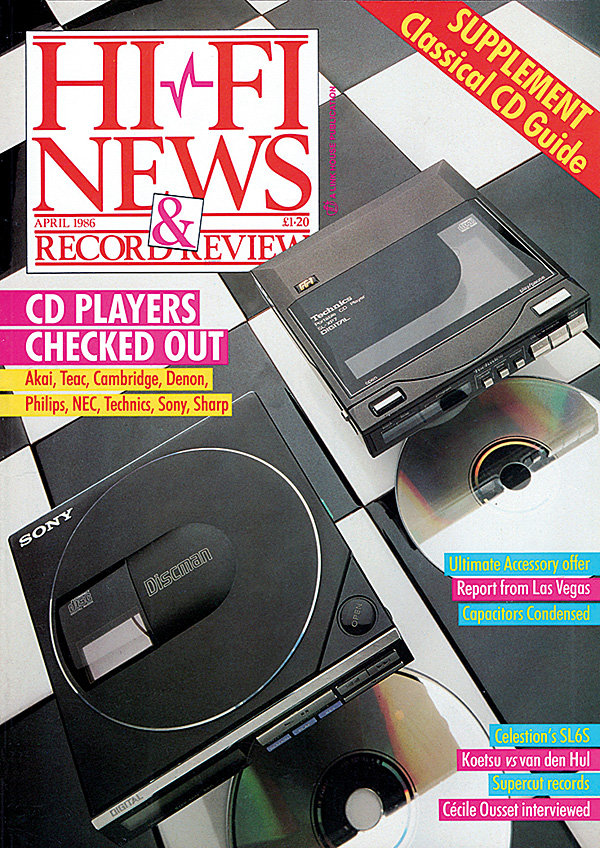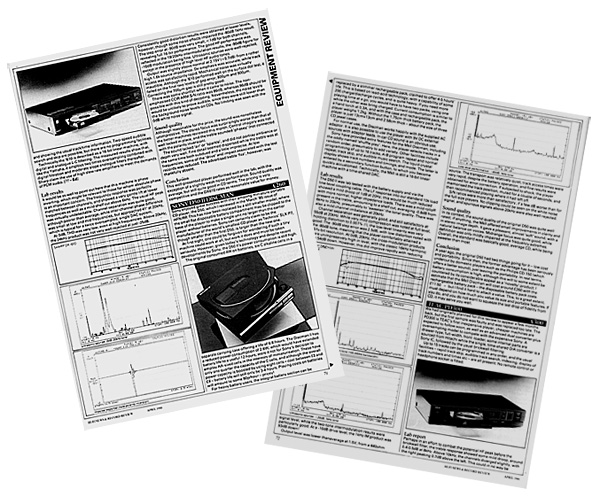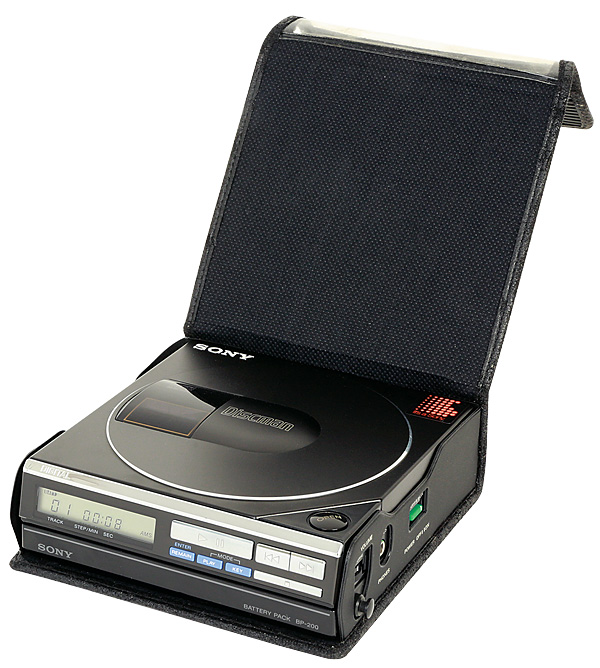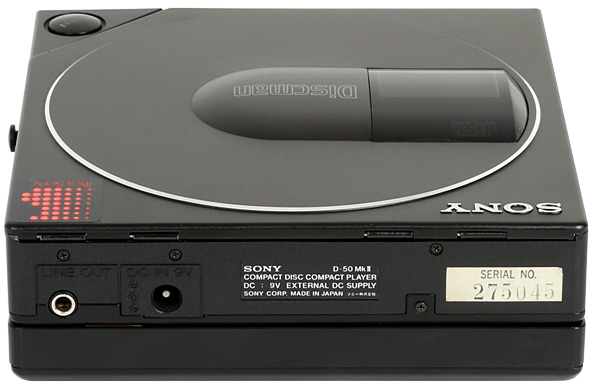Sony Discman (D-50 MkII) Page 2
![]() Tim Listens
Tim Listens
All early portable CD players included a dedicated 'line out' connection for a hi-fi amplifier, since the unit was presumed to have been bought to serve a dual function (after all, who in 1986 could afford two CD players?). This bypasses the volume control and the headphone amplifier, giving the cleanest possible output signal, and this is how it was used.

I find the sound of many of Sony's full-sized CD players a little too conservative for my taste. To me, the portables were always the most exciting to listen to. The two ranges are voiced quite differently, perhaps suggesting that they come from quite separate divisions of the company. Compared to the original D-50 the MkII's treble sounds more polished and less biting, which counts as a definite improvement. Meanwhile, the part of the midrange where vocals reside is also slightly less well-lit, helping to lend the tonal balance a better sense of proportion. What's more, vocals in general are not as grainy when heard via the MkII model and sound more natural, making for a more relaxing listen.
Bringing the top end under control also has the effect of bringings the bass to the fore, the music sounding richer than before. Be under no illusions though, this is no 14-bit Philips and when compared to more conventional CD players the D-50 MkII still has an essentially hard, bright sound. This is the case both through the line-level outputs to an amplifier or directly using the powerful headphone amplifier which, of course, was designed many years before the current restrictions on the output of portable players into headphones on the grounds of safeguarding hearing.

Key Virtue
Listen to Don Henley's 1984 single 'Boys Of Summer' [MCA GFSTD 22350]and the improvements in vocal texture over the previous D-50 model are immediately apparent. Luckily, this does not appear to come at the expense of percussion immediacy, the 'snap snap snap' of the opening snare remaining every bit as sharp as it needs to be. Meanwhile, the apparent extension of bass depth seemed to give a greater sense of weight. Had the player been hidden it would have been difficult to imagine such a powerful sound originating from such a tiny machine.
Stereo perspective and soundstaging is a traditional weakness with early single-DAC Japanese CD players, but it came as a surprise to find that the D-50 MkII performed quite well in this area. The soundstage was broad and continuous, and while the positioning of key instruments, such as the lead guitar, wasn't as pin sharp as one would expect from a full-size twin-DAC player, it was certainly an improvement over the standard set by Sony's original CDP-101.
Studio-produced electronic music seemed to be what best matched the D-50 MkII's underlying character. New Order's Technique [FACD 275.2] was packed with energy when played through the D-50 MkII's miniature circuits. The start/stop nature of the pounding beats that form the bedrock of tracks like 'Vanishing Point' highlighted one of the player's key virtues: there was not a hint of smearing or delay. One consequence of this type of presentation is that the player is forever grabbing your attention with various details of the music's unfolding rhythms – though this means that the D-50 MkII's sound isn't one which is easy to relax to.

To me this proved to be the player's main limitation. It is a fine companion when you really want to become involved with what you are listening to, but it can be a bit overpowering when you just want something to make soothing music in the background. Still, when it comes to sheer thrills, it fits the bill.
Buying Secondhand
Samples of the D-50 MkII are nowhere near as common on the secondhand market as the original D-50, so the first challenge is to find one. While it's nice to have the
BP-200 battery pack to go with it (the machine does not fit properly in its case without it) bear in mind that all examples of this part will be completely useless by now – even those that have been stored from new and never used. For practical purposes, this makes the once-portable D-50 MkII a 'static exhibit'.

As with the first version, many problems stem from the lid falling apart and failing to operate the interlock switches. Originally, film adhesive was used to hold the parts in place but this dries out over time. Careful glueing is the answer here, providing that nothing is missing.
There are two belts inside a D-50 MkII, one for the spindle and one for the laser sled. The former is toothed and has an automatic tensioner so causes few problems. The latter, however, is conventional and can stretch over time. If the player searches endlessly at the beginning of a disc or becomes stuck during playback then this is the first thing to look at, although replacement is best left to an expert as the parts are very small and delicate.

Care should be exercised if the original AC adapter is not present since the polarity of the socket is opposite to what is now common. The required rating is 9V at 800mA and the player will simply not function correctly if a substitute unit is used that isn't gutsy enough.
Hi-Fi News Verdict
As a player that combines clever technology with an exciting sound, the Sony D-50 MkII has a lot to recommend it. Since portables tend to get used less than full-sized players the chances of finding a good one are high, assuming that you can find one at all. Sadly, many will now be acquired for nostalgic reasons or to complete a collection and will be listened to rarely – a shame given how enjoyable they can be.


























































